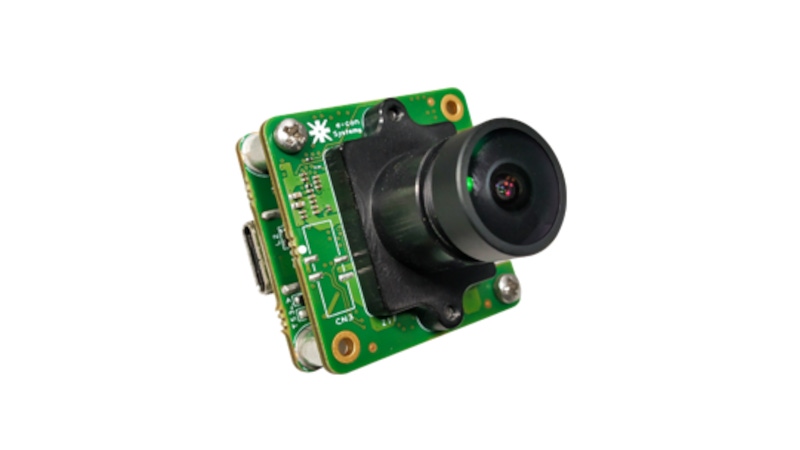Synchronizing Multiple Cameras Key for Automated Mobility Apps
Hardware and software-based processing of camera data provides a clearer picture of the environment for robots and vehicles to work effectively.

At a Glance
- Multiple cameras capturing images simultaneously create a unified and consistent view of the environment.
- Selecting cameras depends on sensor type, resolution, and frame rate.
Multi-camera synchronization is at the heart of autonomous mobility systems like Autonomous Mobile Robots (AMRs). As the term implies, it involves multiple cameras capturing images simultaneously to create a unified and consistent view of the environment.
The selection of cameras is often based on sensor type, resolution, and frame rate. These parameters determine the quality and applicability of the visual data. For instance, higher resolutions and frame rates are beneficial for capturing detailed and dynamic scenes, but demand more processing power and bandwidth.
Now, the main objective of multi-camera synchronization is to achieve temporal alignment among multiple image sensors. This is important for tasks that depend on simultaneous data acquisition from different perspectives, such as stereoscopic vision, 3D reconstruction, and motion analysis. In these applications, even slight timing misalignments can lead to errors in depth estimation and spatial orientation.
Especially in AMRs, synchronization across multiple cameras helps utilize visual data for various functionalities like object recognition, obstacle detection, and navigation. High-resolution imaging captures fine details necessary for nuanced detection and recognition tasks. The synchronization ensures that the data collected is consistent, providing a reliable basis for these robots to process and interpret their surroundings. Consistency is crucial for real-time decision-making and accurate path planning.
Key Synchronization Elements
Multi-camera synchronization in autonomous vehicles involves several technical components. Each contributes to the system's ability to accurately perceive and navigate its environment.
Synchronization Techniques
The synchronization of cameras is achieved through sophisticated hardware and software methods. In hardware synchronization, a common clock signal or a global shutter mechanism is often used to ensure simultaneous image capture across all cameras. This minimizes discrepancies caused by temporal misalignment, which is important for accurate motion tracking and 3D environment mapping. Software synchronization complements this by employing algorithms that timestamp and align image frames during post-processing. This is crucial for systems where hardware-based synchronization is not feasible or as a redundancy to enhance accuracy.
Optimized Camera Placement
Strategic placement of cameras around the vehicle is carefully decided upon after considering factors like the vehicle's aerodynamic design, field-of-view requirements, and sensor fusion algorithms. The placement is about achieving a full 360-degree view while optimizing the camera angles to reduce occlusions and distortion. It involves a detailed analysis of the vehicle's dimensions and operational environment to ensure that each camera provides maximal coverage with minimal overlap, effectively eliminating blind spots.
360-degree Surround View
The 360-degree surround view is a complex feature that relies heavily on both the physical arrangement of cameras and image processing algorithms. This system stitches together real-time feeds from multiple cameras, creating a composite bird's-eye view around the vehicle. Advanced algorithms are employed to calibrate each camera's feed, correct lens distortion, and seamlessly merge the images. This comprehensive view is a must-have for functions that involve high situational awareness, such as autonomous parking, collision avoidance systems, and navigating through densely populated urban environments.
Complex Image Stitching
For image stitching, algorithms handle the geometric alignment, color balancing, and blending of images from different cameras. The process often requires handling varying image resolutions, dealing with different exposure levels, and compensating for lens distortion. The stitching algorithm must accurately map pixels from different images onto a unified coordinate system. This is especially crucial for extended field-of-view applications, such as lane-keeping assistance and blind spot monitoring, where seamless visual continuity is necessary for safe operations.
Benefits of Multi-Camera Synchronization
Achieving Situational Awareness
Synchronized multi-camera systems equip autonomous vehicles with an integrated, 360-degree perspective of their surroundings. The coverage from all directions plays a vital role in diminishing blind spots and boosting the vehicle's awareness of its environment.
Boosting Depth Perception
One of the primary benefits of these systems is their enhanced capability to measure distances and comprehend the spatial arrangement of objects. By analyzing visual data from multiple cameras that are synchronized, these systems can assess depth before constructing a 3D model of their surroundings. This functionality is required for safely navigating lanes, avoiding obstacles, and performing precise parking maneuvers.
Eliminating Blind Spots
The strategic alignment and synchronization of cameras around the vehicle curtails blind spots and diminishes the incidence of false alarms. With a thorough detection capacity from all vantage points, the likelihood of overlooking potential hazards is significantly reduced. Hence, it allows for real-time processing, which leads to more informed decision-making.
Improving Mapping and Localization
Each camera in the system contributes a unique perspective of the environment, and when these views are synchronized, they form an elaborate spatial map. It helps vehicles to accurately comprehend their surroundings. Also, the unified data from these cameras ensures accurate localization, enabling the vehicle to determine its exact location within this map.
Dynamic Analysis and Response
Another benefit is the improved capability for dynamic scene analysis and rapid response. Synchronized multi-camera systems allow autonomous vehicles to analyze complex scenes in real time, identifying and reacting to moving objects, such as pedestrians, other vehicles, or sudden obstacles. It enables the vehicle to track the trajectory and speed of moving objects accurately, with predictive algorithms to improve decision-making abilities in dynamic and unpredictable environments.
Summing Up
The implementation of synchronized multi-camera systems in autonomous vehicles represents a milestone innovation. These systems fundamentally enhance the technical prowess of such vehicles, offering more accurate environmental perception, improved data integration, and enhanced real-time processing capabilities. As the embedded vision technology matures, its contribution to autonomous vehicle systems is expected to become increasingly important.
About the Author(s)
You May Also Like
.jpg?width=100&auto=webp&quality=80&disable=upscale)
.jpg?width=400&auto=webp&quality=80&disable=upscale)



